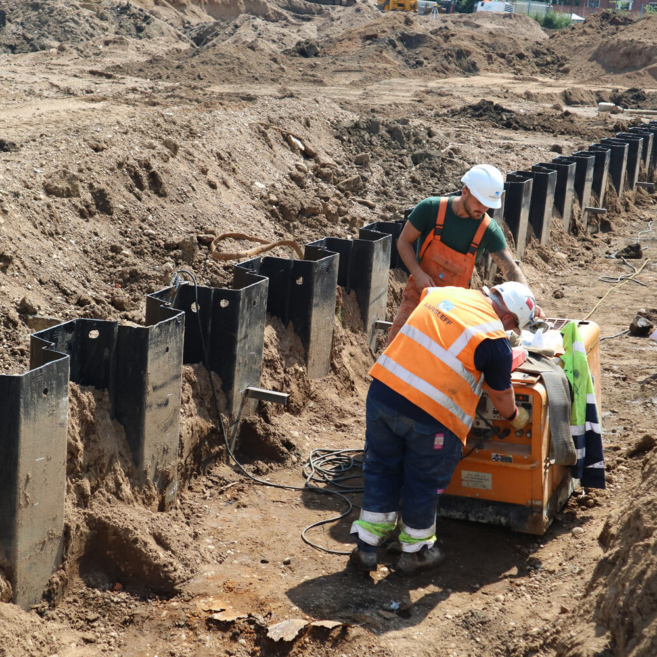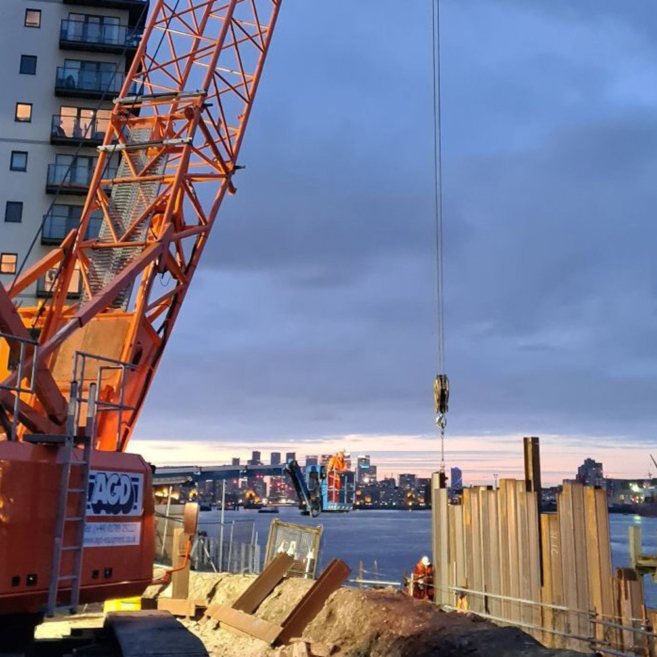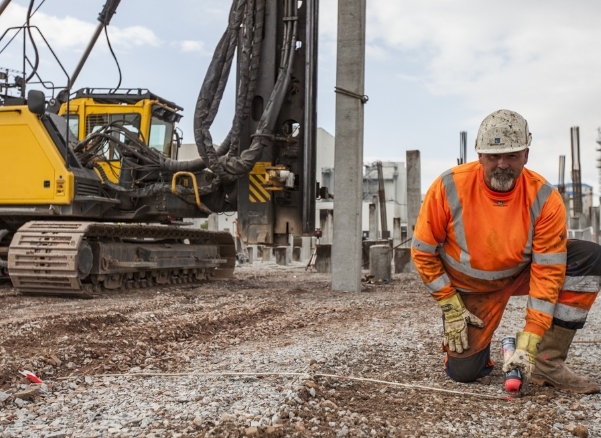Top Ten Questions About Sheet Piling
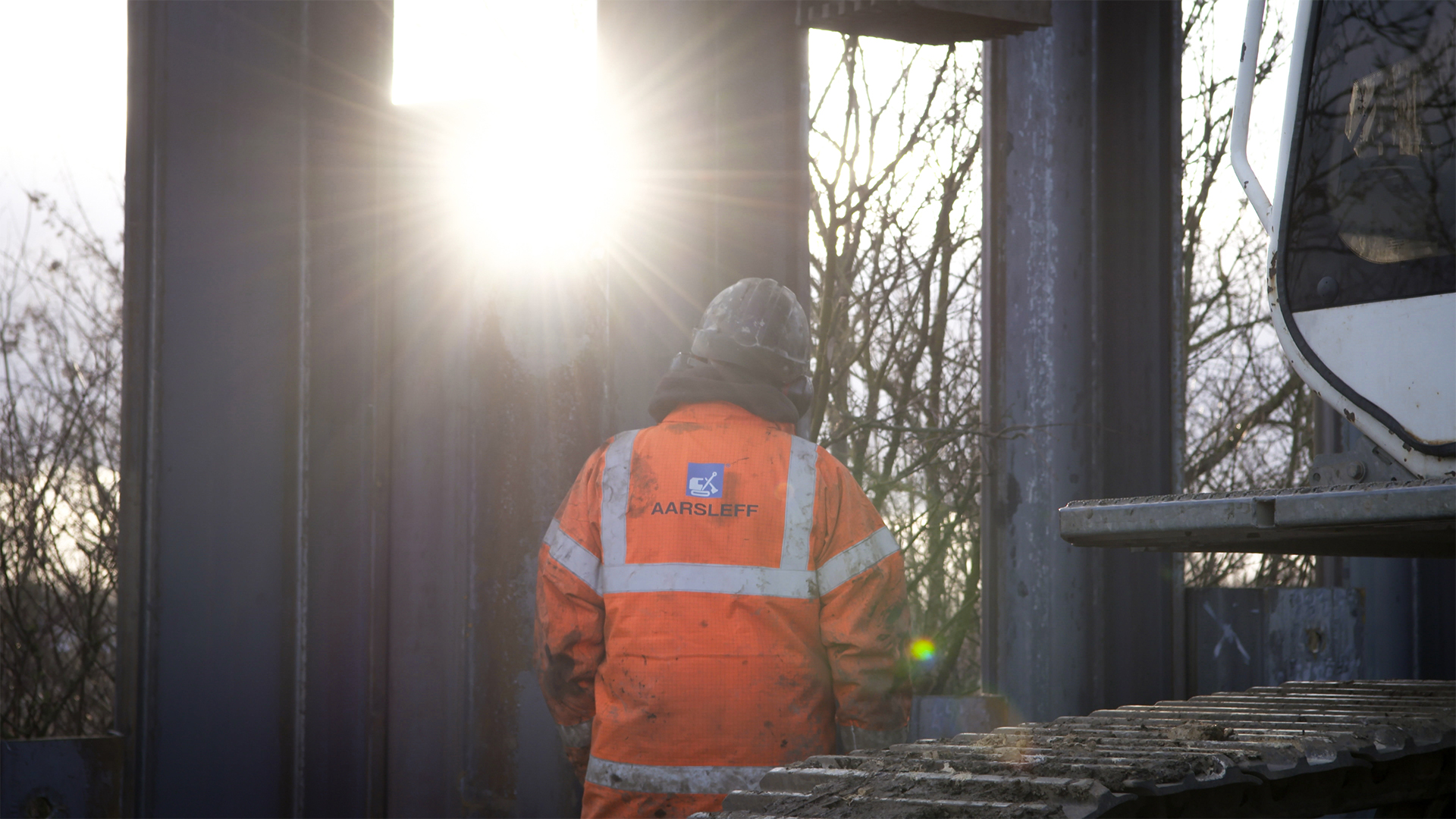
Delivering sheet piling in the UK since the late 1980s, Aarsleff Ground Engineering’s design and delivery teams are experts in the design and build of sheet pile retaining walls. We’ve answered the top ten most asked questions about sheet piling below:
What is sheet piling?
Sheet piles are sections of sheet steel with interlocking edges that are driven into the ground to provide permanent or temporary earth retention and excavation support.
What are the advantages of sheet piles?
- Sheet piles are recyclable and reusable.
- Piles can come in a wide range of lengths, size, and steel options.
- They can be used for temporary and permanent structures.
- They can be installed using silent and vibration-free methods.
- The work is neat, clean, and creates no spoil arisings. The supervision of work on-site can be reduced, and minimal storage space is required.
- Sheet piling is a more cost effective and quicker installation than contiguous or secant walls.
- Cofferdams can be constructed in almost any desired shape, however, for practical and economic reasons, most cofferdams are either rectangular or circular.
- Sheet piles can provide a close-fitting joint to form an effective water seal.
- They have a long life above and below water, making them advantageous for marine and coastal projects.
- Anchored sheet piled walls can provide even more flexibility for installation purposes.
Is sheet piling noisy?
Traditional installation of sheet piling involves hammering the sheets into the ground, which can be noisy if performed in a busy area. They can, however, be installed using a silent press, which is noise and vibration-free. The pile press equipment essentially ‘walks’ along the pile heads, using a self-moving system. This means no crane support is required to move the pile press along the line of the wall, allowing its employ in locations traditionally difficult to reach, such as by water.
Is sheet piling watertight?
Steel itself is a waterproof material so a sheet pile wall is watertight other than at the intersection of the steel sheets. If the solution needs to be watertight, the sheets can be secured via sealant or welding in order to ensure no water can pass through. The water flow through sealed interlocks can be calculated with a practical design method backed up by several in-situ full-scale tests.

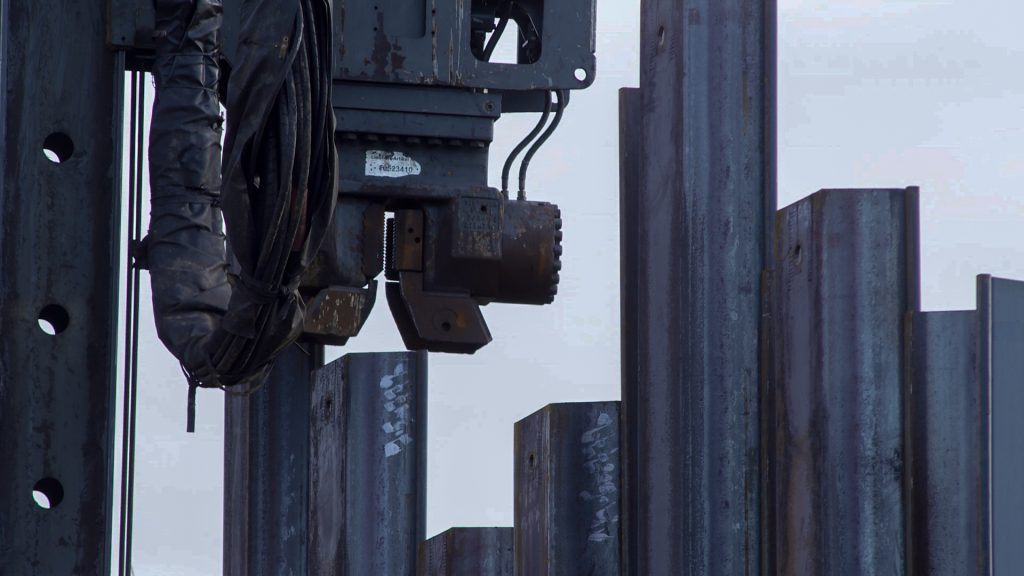
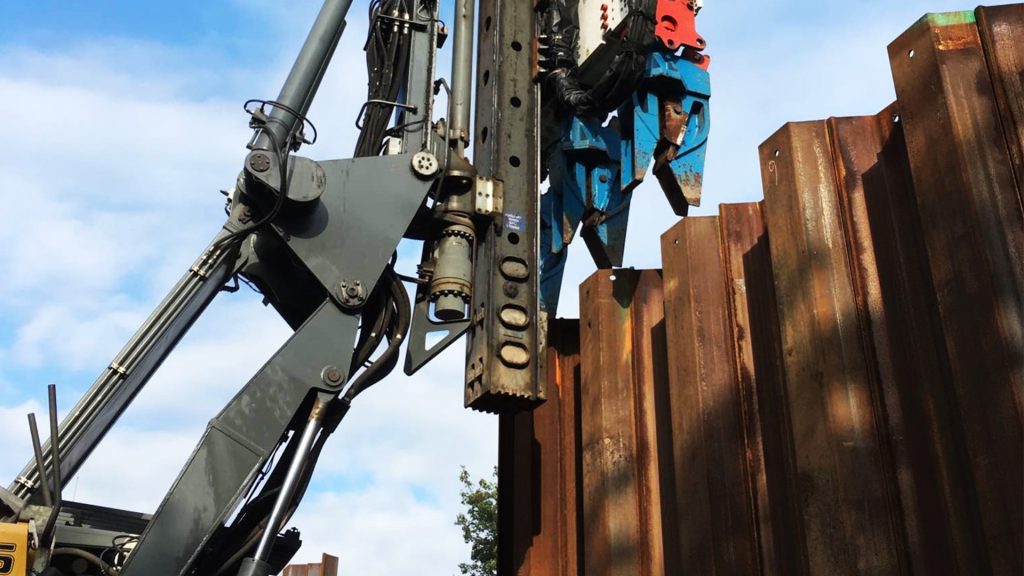

How long does sheet piling last?
Sheet piling can be designed as a temporary solution. The nature of the long steel sheets means they can be easily extracted and reused, serving to retain whilst other construction work continues. If the wall is designed to be permanent, the piles can have a design life of up to 125 years, but this is dependent on the environment within which they are installed.
What can be used instead?
There are a number of alternative retaining wall solutions. King Post Walls, for example, are a cheaper alternative to sheet piling if concrete infill panels are chosen.
How thick are sheet piles?
The “standard” sheet pile was the 400 – 420mm wide U pile for several decades in the UK
Converting from a narrow, inefficient pile to a wide modern pile can save up to 27% on weight whilst offering equivalent driveability and strength.
In the 1980s, the 525mm wide range overtook the older sections, offering much higher strength per unit weight but with reduced capacity to withstand sub-optimal driving practice. The 600mm wide U pile was initially resisted because of fears over driveability, but the efficiency and need to compete with Z piles soon overcame these reservations. The 600mm wide U pile is still the standard temporary works pile today.
Larssen PU12 – 600mm width
Arcelor Mittal AZ – 630mm width
ArcelorMittal AU – 750mm width
Today we see even wider piles with U piles up to 750mm wide and Z piles up to 800mm wide. These piles offer maximised economy (optimised strength to weight ratio) but have clever additions such as strengthened shoulders to ensure driveability is not compromised.
Does sheet piling get removed?
Sheet piling is an effective temporary retaining solution, supporting temporary earthworks and providing water retention for excavations to take place. Once the permanent solution has been installed, the sheet piles can be extracted and reused.
How are sheet piles installed?
To achieve the full performance of your structure, your sheet pile wall must be driven to the depth specified by the wall designer. This can be achieved through a number of methods – vibratory hammers, impact hammers, or a silent press if noise and vibration need to be eliminated. Corner and connector pieces are available for any sheet pile purchased, allowing the wall to follow the line laid out in the design.
Conclusion
Aarsleff Ground Engineering offer a range of Sheet Piling solutions. Permanent retaining walls utilising sheet piles are used on schemes large and small, from simple projects to complex slope stabilisation solutions. They may be designed to both retain temporary excavations and to act as the permanent retaining structure. Sheet pile walls are commonly used in service yards of commercial and retail sector developments, flood defence schemes, bridge abutments and boundary walls.
Get in touch to discuss your project today.
The Latest. News, podcasts & projects
